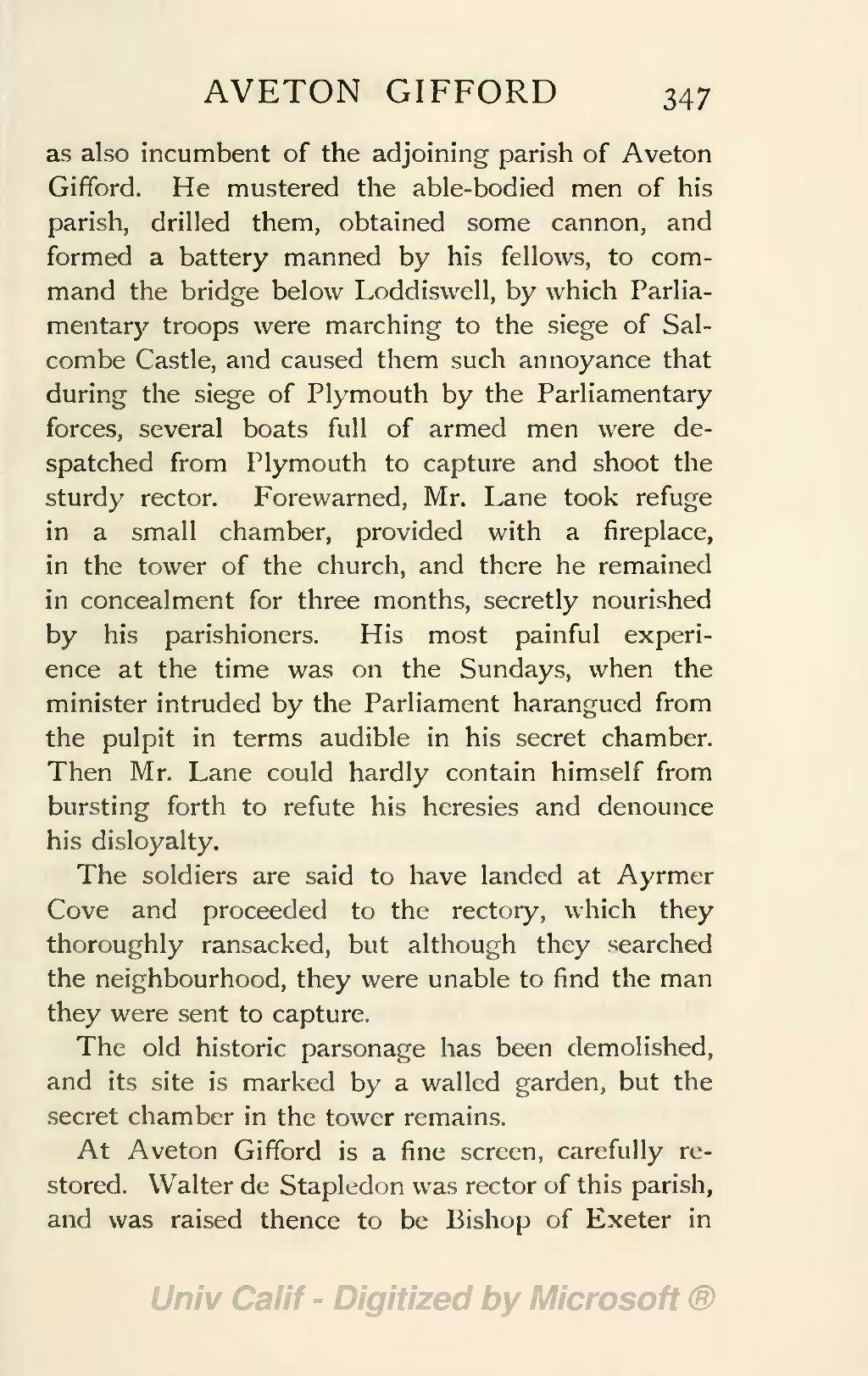as also incumbent of the adjoining parish of Aveton Gifford. He mustered the able-bodied men of his parish, drilled them, obtained some cannon, and formed a battery manned by his fellows, to command the bridge below Loddiswell, by which Parliamentary troops were marching to the siege of Salcombe Castle, and caused them such annoyance that during the siege of Plymouth by the Parliamentary forces, several boats full of armed men were despatched from Plymouth to capture and shoot the sturdy rector. Forewarned, Mr. Lane took refuge in a small chamber, provided with a fireplace, in the tower of the church, and there he remained in concealment for three months, secretly nourished by his parishioners. His most painful experience at the time was on the Sundays, when the minister intruded by the Parliament harangued from the pulpit in terms audible in his secret chamber. Then Mr. Lane could hardly contain himself from bursting forth to refute his heresies and denounce his disloyalty.
The soldiers are said to have landed at Ayrmer Cove and proceeded to the rectory, which they thoroughly ransacked, but although they searched the neighbourhood, they were unable to find the man they were sent to capture.
The old historic parsonage has been demolished, and its site is marked by a walled garden, but the secret chamber in the tower remains.
At Aveton Gifford is a fine screen, carefully restored. Walter de Stapledon was rector of this parish, and was raised thence to be Bishop of Exeter in
